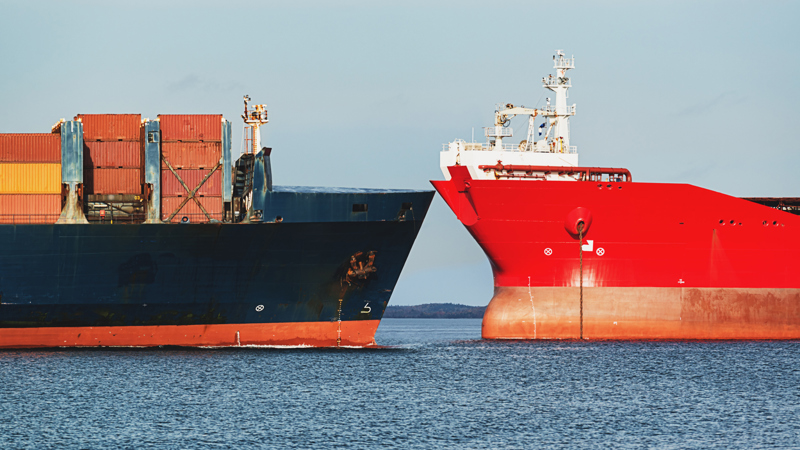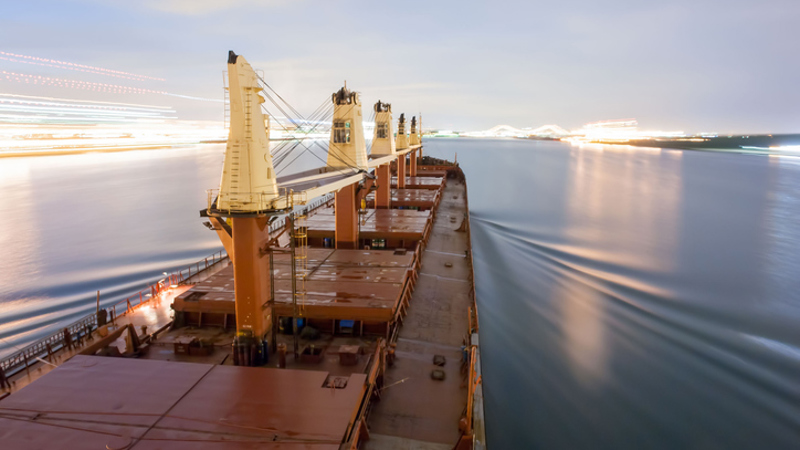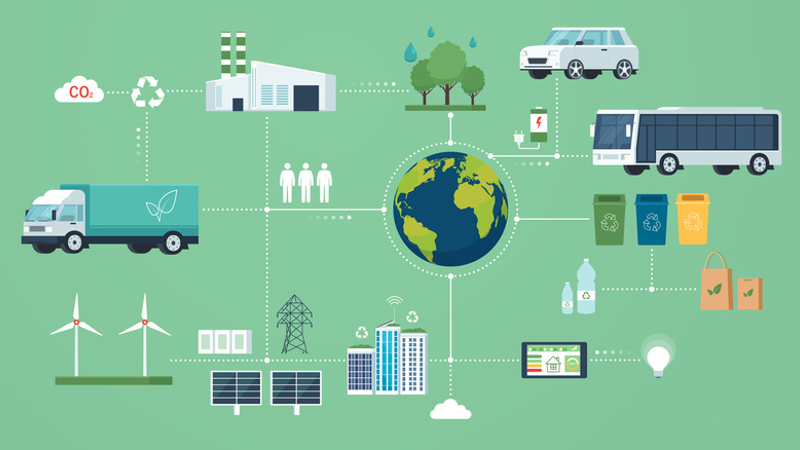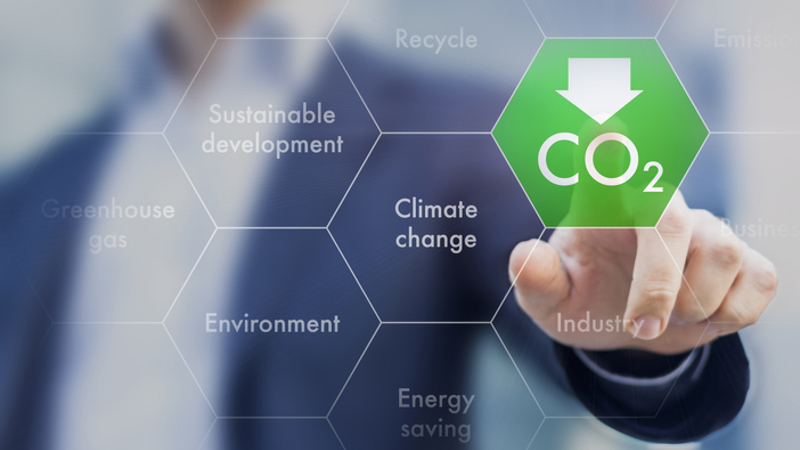Maritime Decarbonisation - EU ETS, IMO revised strategy, FuelEU Maritime, inland shipping emissions label, reporting obligations and also liability for green washing?!
October 2023
Background on maritime sustainability regulations
International regulations on greening shipping (maritime decarbonisation) in line with the Paris Agreement[1] have been long overdue.[2] This is despite the fact that (i) the maritime industry is responsible for about three per cent of total global CO2 emissions, (ii) the maritime industry has a significant share of the methane emissions and (iii) emission rates in shipping - unlike in other sectors - are not declining.[3] In recent months, both the International Maritime Organisation ("IMO"), the supranational regulator of international maritime shipping[4], and the European Union have adopted regulations to make shipping more sustainable. For the inland shipping sector, the Dutch legislator has also announced further measures. Furthermore, the Dutch Authority for Consumers and Markets (“ACM”) has also announced it is investigating sustainability claims (greenwashing) in transport. What rules have been implemented? And what should market players pay attention to specifically?
IMO revised strategy
To reduce emissions from international shipping, the IMO published its 'initial strategy' in 2018.[5] This initial strategy prescribed a 40% reduction in the carbon intensity of international shipping by 2030 compared to 2008 and 70% by 2050. Carbon intensity is a measure of a ship's greenhouse gas emissions relative to the amount of cargo transported over a given distance and thus takes into account periods of inactivity.[6]
The initial strategy further included a goal of reducing greenhouse gas emissions by 50% by 2050 compared to 2008 and reducing them to zero as soon as possible. This target fell far short of the need for climate-neutral operations by 2050. A target, incidentally, that the aviation industry was already propagating in 2021.[7]
The IMO therefore revised and significantly tightened its initial strategy in July 2023.[8] A target is now included to be 'close to 2050' climate-neutral in terms of emissions. In addition, the carbon intensity of new ships should be reduced, and at least 5%, but preferably 10%, of the energy used in shipping should come from (near) zero emission technologies by 2030.
The revised strategy will be reviewed in 2028 and tightened further if necessary. Given the increasingly palpable impact of the climate crisis, it is likely that this will indeed happen.
In the meantime, IMO is working on further regulations to ensure that the set targets of the revised strategy are indeed met. A pricing mechanism is expected to be introduced. What exactly that will look like is still unknown. Whereas the EU has opted for emissions pricing by including shipping in the ETS system (see below), for now and based on discussions, it is likely that IMO will opt for a tax on fuel.[9]
EU ETS - maritime shipping
From 1 January 2024, international maritime shipping will be part of the European Emissions Trading System ("EU ETS").[10] The EU ETS is the cornerstone of European policy to reduce greenhouse gas emissions. An ETS, or emission trading system, limits the amount of emissions to be emitted by setting a cap on total emissions and allowing emissions only if emissions allowances are surrendered by the emitter to do so.[11] These allowances are available from the issuer or on the open market. The quantity of available allowances will be reduced annually, increasing the price of the allowances and reducing emissions. In concrete terms, the inclusion of shipping in the EU ETS means that emissions from larger ships will have to be paid for, just as other industries already pay for their emissions.
The obligation to surrender allowances will initially apply only to passenger and cargo ships over 5,000 tons and then only to CO2 emissions (and not to emissions of other greenhouse gases).[12] Intra-EU traffic (including Norway and Iceland) will be taxed more heavily than traffic to and from the EU. The scheme will be extended to methane and nitrous oxide from 2027, and possibly also to smaller ships.
Payment is made on verified tank to wake emissions, i.e. scope 1. Exceeding the emission scope, i.e. emissions without surrendering allowances, results in a penalty of €100 for each ton of CO2, plus an inflation correction. The emission allowances initially due must still be paid.[13] Failure to pay in two consecutive years may result in detention of vessels and/or refusal of entry into the EU. The person responsible for remitting the allowances is the 'shipping company, or shipowner or another party, such as the manager or bareboat charterer who has taken over the shipowner's responsibility for operating the ship.[14] However, these rights must be reimbursed to the shipping company by the commercial operator of the vessel (the charterer).[15] It seems advisable to also contractually define and specify this obligation.[16] When to pay, how much, to whom, etc. The final payment to the government agencies only takes place in the following year, by September 30 at the latest. Clearly, many things can happen since the actual emission and that remittance moment.
The statute transposing the EU directive into Dutch law was published on 5 September 2023 and is still under discussion.[17] What is clear is that the inclusion of shipping in the EU ETS will not only affect ship owners, but also other parties in/involved in the supply chain, including ship managers, charterers, (cargo) insurers and ports. It is advisable to take this into account when concluding future contracts and adapt existing contracts accordingly, whether by inserting specially designed clauses or not.[18]
EU ETS2 - inland navigation
Inland navigation does not fall under the direct scope of the current EU ETS, which will include maritime shipping from 1 January 2024. For buildings, road transport and certain industrial sectors not already covered by the existing EU ETS, a new ETS system will be established, also called "ETS2".[19] Unlike under the existing ETS where (end-)users have to surrender emissions trading allowances, under ETS2 allowances should be paid for by fuel suppliers.
Inland navigation is not directly covered by the wording of ETS2. However, the Dutch government has announced its intention to bring all fossil fuels not covered by the EU ETS under the ETS2 system.[20] This means that, in time, emission rights will probably also have to be paid for fuel used in inland navigation. It is likely that this will then also apply to smaller seagoing vessels, insofar as they are not covered by the EU ETS.
FuelEU Maritime
As part of its holistic approach, the EU has also set standards to be met by marine fuels and made use of shore-side electricity mandatory for passenger and container ships docked in major EU ports.[21] The aim of these regulations is to bring about an increase in renewable fuels. Specifically, the EU sets a limit on the greenhouse gas intensity of fuel used on board ships with a gross tonnage above 5,000 tons, arriving at, staying within and departing from ports in EU member states. The GHG intensity, or the amount of GHG emissions over the fuel's life cycle, per unit of energy[22] will be progressively reduced (by 2% in 2025 to 80% in 2050). Although the +5,000-ton ships only account for around 55% of ships calling at European ports, they also account for 90% of all GHG emissions.
Both the EU and IMO thus require an increase in alternative fuels in the coming years. Problematically, the development of such alternative fuels is still in its infancy. This applies first of all to the technology and operational infrastructure. However, the legal infrastructure is not yet ready either. For instance, there are no specific private law conventions for global limitation of liability in case of an incident involving a ship that either runs on LNG, methanol or ammonia, or carries these substances as cargo on board.[23] This means that there is no strict liability of the shipowner, nor compulsory insurance and/or direct action against his liability insurer. Nor is there a fund for additional compensation beyond the limited liability, as is the case under the Oil Pollution Convention with the Fund Convention.[24] Parties - including port operators - should be aware of this and contractually cover themselves against these and other transition risks.
Emission label for inland navigation
Significantly for inland navigation, the former Dutch government’s intention is to eventually make the now voluntary emission label for inland vessels[25] implemented in November 2021 mandatory. Ship owners will have to apply for a label to begin with. After that, they may be required to move into a better category step by step, with the aim of having an average B label by 2030. The actual details are not yet known.
Reporting and due diligence obligations
In addition to regulations established specifically for shipping, parties operating in shipping obviously also have to comply with more general sustainability regulations. From 1 January 2024, larger parties operating in the European market will be obliged under the Corporate Sustainability Reporting Directive (CRSD) to report on, among other things, their impact on the environment.[26] This obligation covers not only their own impact, but also that of parties within the supply chain. Companies subject to the reporting obligation will need to contractually instruct their contractual partners to provide sufficient information. The obligation will therefore feed through into the supply chain. When entering into contracts, it is important to arrange this properly towards principals and towards servants and agents. Especially when entering into long-term contracts, it is advisable to duly consider and regulate this aspect.
Incidentally, it is likely that the CSRD is only a step towards further supply chain responsibility. At European level, negotiations continue on the text of the Corporate Sustainability Due Diligence Directive (CSDDD), which, among other things, imposes further measures to combat global warming and climate change.
Greenwashing
European Commission research has found that a substantial percentage of companies' sustainability claims are too vague, misleading or insufficiently substantiated. It has therefore proposed regulations to combat 'greenwashing'.[27] It aims to introduce harmonised calculation methods that take into account the entire value chain. The EC-regulation is primarily aimed at the B2C market in a general sense and not specifically at the transport sector. Nevertheless, it will likely also impact the B2B market.
In its press release of 28 August 2023, the Dutch ACM (Authority Consumer & Market) mentioned that it will investigate sustainability claims in the transport sector. The ACM wants to prevent consumers from being misled, including about the level of emissions in transport. It is important for companies to comply with rules on green claims - which vary internationally - when making sustainability claims. The rules of thumb published by the ACM can help in this respect:
- Use correct, clear, specific and complete sustainability claims;
- Substantiate sustainability claims with facts and keep them up to date;
- Make fair comparisons with other products or competitors;
- Describe future sustainability ambitions in concrete and measurable terms/ make sure visual claims and labels are not confusing.[28]
Failure to live up to sustainability claims can lead not only to sanctions from the ACM, but also to claims from private parties.[29] Legal proceedings related to sustainability claims (green washing) have been increasing rapidly in recent years.[30]
Conclusion
Shipping will have to become greener. This will require adequate legal frameworks and concrete regulations. In practice, it is important that players know which public-law obligations they have to comply with and that they take concrete steps to implement the frameworks set, both operationally and legally. Much is still unclear. This is precisely why it is important to seal off risks contractually as well as possible. This applies to all parties in/involved in the supply chain.
The recent new IMO and EU regulations have brought the legal frameworks for shipping in line with international agreements.[31] Now it is up to the practice to duly regulate their relationships contractually.
Jolien Kruit is a member of the CMI International Working Group on Maritime Decarbonisation.
* * *
[1] The Paris Agreement is a legally binding treaty on climate change, signed at COP21 in Paris on 12 December 2015: The Paris Agreement | UNFCCC. Given its international nature, the shipping sector is in principle excluded from the Paris Agreement.
[2] Implementing the goals of the Paris Agreement was one of the objectives of the revised strategy: Art. 1.10 IMO Resolution MEPC.377(80), adopted on 7 July 2023, '2023 IMO Strategy on Reduction of GHG Emissions from Ships'. According to calculations by the International Council on Clean Transportation, the revised strategy is "not compatible with 1.5°C but is compatible with well below 2°C". IMO's newly revised GHG strategy: What it means for shipping and the Paris Agreement - International Council on Clean Transportation (theicct.org). Also: International Energy Agency, International shipping - IEA.
[3] Fourth Greenhouse Gas Study 2020 (imo.org).
[4] The IMO is - among other things - also responsible for preventing pollution from ships and thus maritime emissions. See also M.A.W. van Maanen and J.A. Kruit, Sustainable Transport (preadvies), Paris Publishing, Zutphen 2021, p. 184-186.
[5] Resolution MEPC.304(72) adopted on 13 April 2018, 'Initial IMO Strategy on Reduction of GHG Emissions from Ships'.
[6] On the carbon intensity in shipping in detail, see the report D. Nelissen et al, 'CII and EU Maritime Decarbonisation', CE Delft, 2023.
[7] IATA Press Release 66, 'Net-Zero Carbon Emissions by 2050', 4 October 2021.
[8] Resolution MEPC.377(80), adopted 7 July 2023, '2023 IMO Strategy on Reduction of GHG Emissions from Ships'.
[9] See also M.A.W. van Maanen and J.A. Kruit, Sustainable Transport (preadvies), Paris Publishing House, Zutphen 2021, pp. 224-227.
[10] Directive (EU) 2023/959 of the European Parliament and of the Council of 10 May 2023 amending Directive 2003/87/EC establishing a scheme for greenhouse gas emission allowance trading within the Union and Decision (EU) 2015/1814 on the establishment and operation of a market stability reserve for the EU greenhouse gas emission allowance trading scheme (cf. preamble 19-36).
[11] For industry, the EU ETS has been in place for many years (since 2005) and works. In the sectors covered by its operation, the current EU ETS regime aimed to achieve an emission reduction of 43% compared to 2005, but achieved a 51% reduction. Proposal for establishing a system for greenhouse gas emission allowance trading within the Union, COM(2021)551 final, Explanatory Memorandum, p. 1.
[12] Regulation (EU) 2023/957 of the European Parliament and of the Council of 10 May 2023 amending Regulation (EU) 2015/757 to include maritime transport activities in the EU Emissions Trading Scheme and to provide for the monitoring, reporting and verification of emissions of additional greenhouse gases and emissions from additional types of ships, Art. 1 introductory paragraph and 4.
[13] In September 2023, the price per allowance will be around €85.
[14] Art. 3 w Directive 2003/87/EC establishing a scheme for greenhouse gas emission allowance trading within the Union (amended).
[15] Article 3gc Directive 2003/87/EC establishing a scheme for greenhouse gas emission allowance trading within the Union (amended).
[16] Cf. also the BIMCO ETS clause: ETS - Emission Trading Scheme Allowances Clause for Time Charter Parties 2022 (bimco.org).
[17] Amendment of the Environmental Management Act and the Economic Offences Act for the implementation of Directive No 2023/959, Directive No 2023/958 and Regulation No 2023/957 of the European Parliament and of the Council of the European Union of 10 May 2023 (OJEU 2023, L130) for the purpose of adjusting the emissions trading system in the field of greenhouse gas installations and aviation and an extension to shipping and fuel suppliers (Parliamentary Paper 36 407).
[18] See, for example, BIMO ETS clause: ETS - Emission Trading Scheme Allowances Clause for Time Charter Parties 2022 (bimco.org).
[19] Directive (EU) 2023/959 of the European Parliament and of the Council of 10 May 2023 amending Directive 2003/87/EC establishing a scheme for greenhouse gas emission allowance trading within the Union and Decision (EU) 2015/1814 on the establishment and operation of a market stability reserve for the EU greenhouse gas emission allowance trading scheme (cf. preamble 75-94).
[20] Kamerbrief over voortgang duurzaam vervoer en toelichting aanvullende klimaatmaatregelen mobiliteitssector | Kamerstuk | Rijksoverheid.nl.
[21] Regulation (EU) 2023/1805 on the use of renewable and low-carbon fuels in maritime transport (OJEU 2023, L 234, p. 48) and Regulation (EU) 2023/1804 on the deployment of alternative fuel infrastructure (OJEU 2023, L 234, p. 1), respectively.
[22] European policy - Sustainable mobility (rwsduurzamemobiliteit.nl).
[23] Frontiers | The use of alternative fuels for maritime decarbonization: Special marine environmental risks and solutions from an international law perspective (frontiersin.org).
[24] International Convention on Civil Liability for Oil Pollution Damage (1992 Liability Convention) and International Convention on the Establishment of an International Fund for Compensation for Oil Pollution Damage, 1992 (1992 Fund Convention).
[25] Home - Inland Shipping Emission Label
[26] Directive (EU) 2022/2464 of the European Parliament and of the Council of 14 December 2022 amending Regulation (EU) 537/2014, Directive 2004/109/EC, Directive 2006/43/EC and Directive 2013/34/EU, with regard to sustainability reporting by companies.
[27] Proposal for a Directive of the European Parliament and of the Council on the substantiation and communication of explicit environmental claims (Green Claims Directive, COM(2023) 166.
[28] Sustainability Claims Guide | ACM.nl. See also Jellien Roelofs & Anne-Fleur Filemon, "The revised ACM Guideline on Sustainability Claims: a clearer framework", Business Law Reports 2023/35, pp. 147-150.
[29] J.A. Kruit, 'Strong increase in climate justice (expected)', (blog), Strong increase in climate justice (expected) (vantraa.co.uk).
[30] See, among others, Greenwashing lawsuits in businesses: Notable cases and consequences (Part 2) (circularise.com).
[31] International shipping - IEA The preamble (19) to the EU ETS directive still mentions that IMO regulation is still inadequate. However, the directive dates from 10 May 2023, i.e. before the adoption of IMO's revised strategy.








